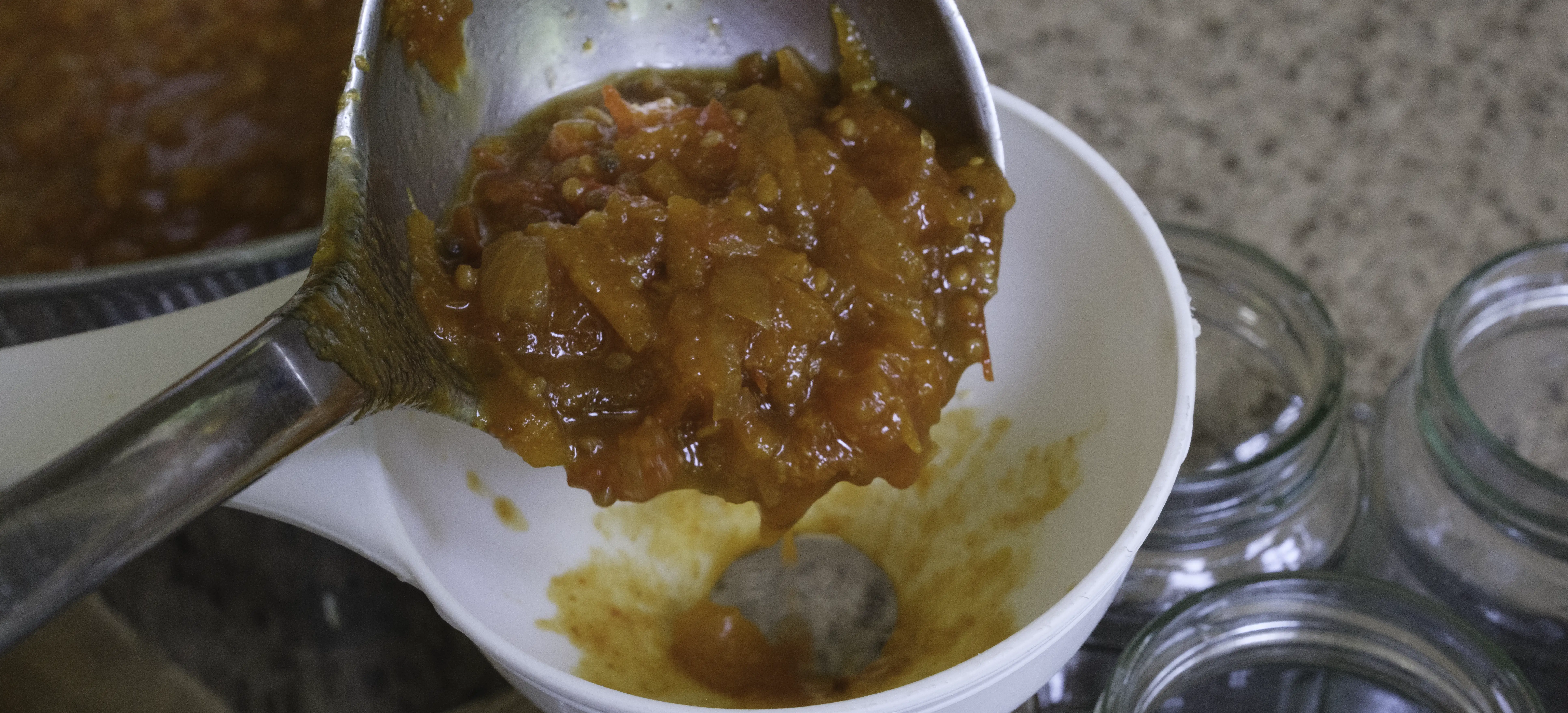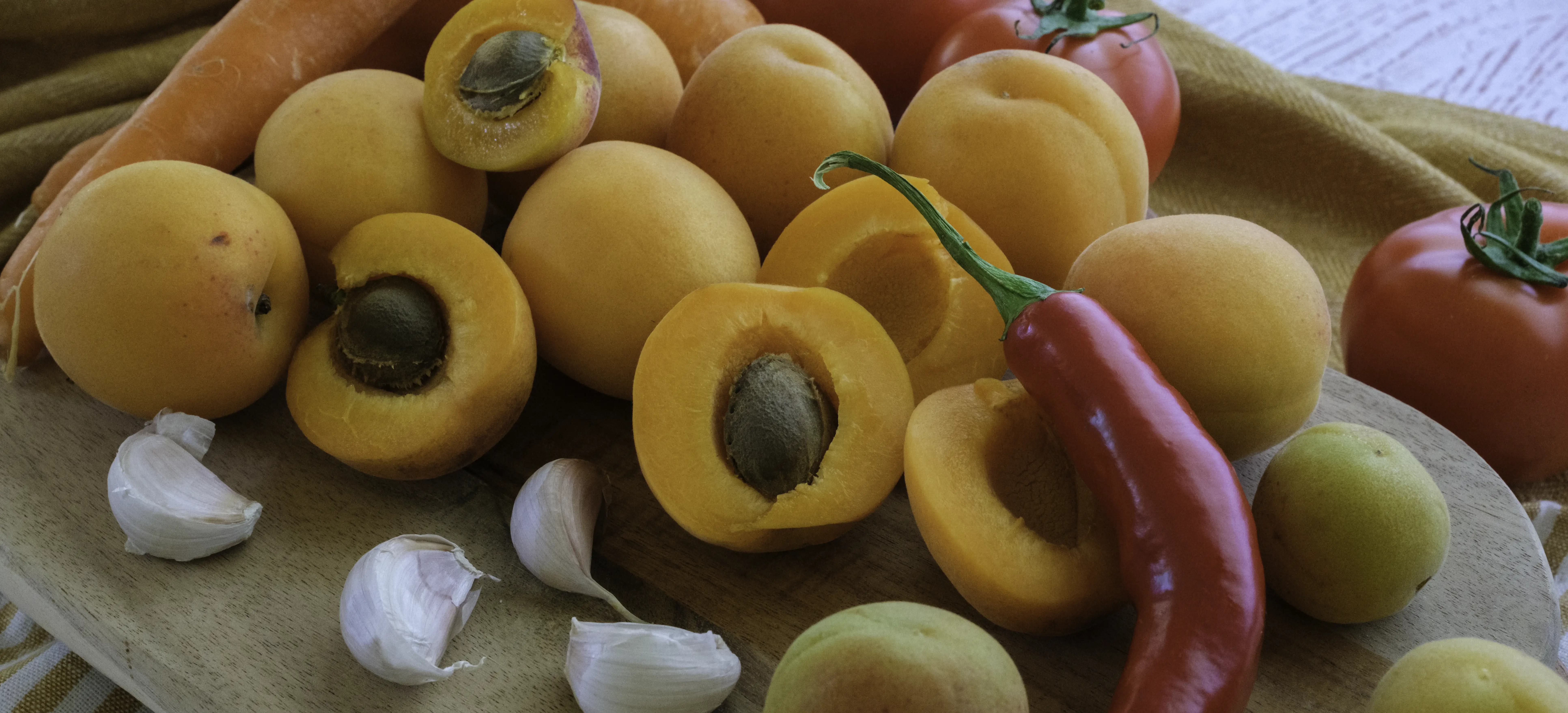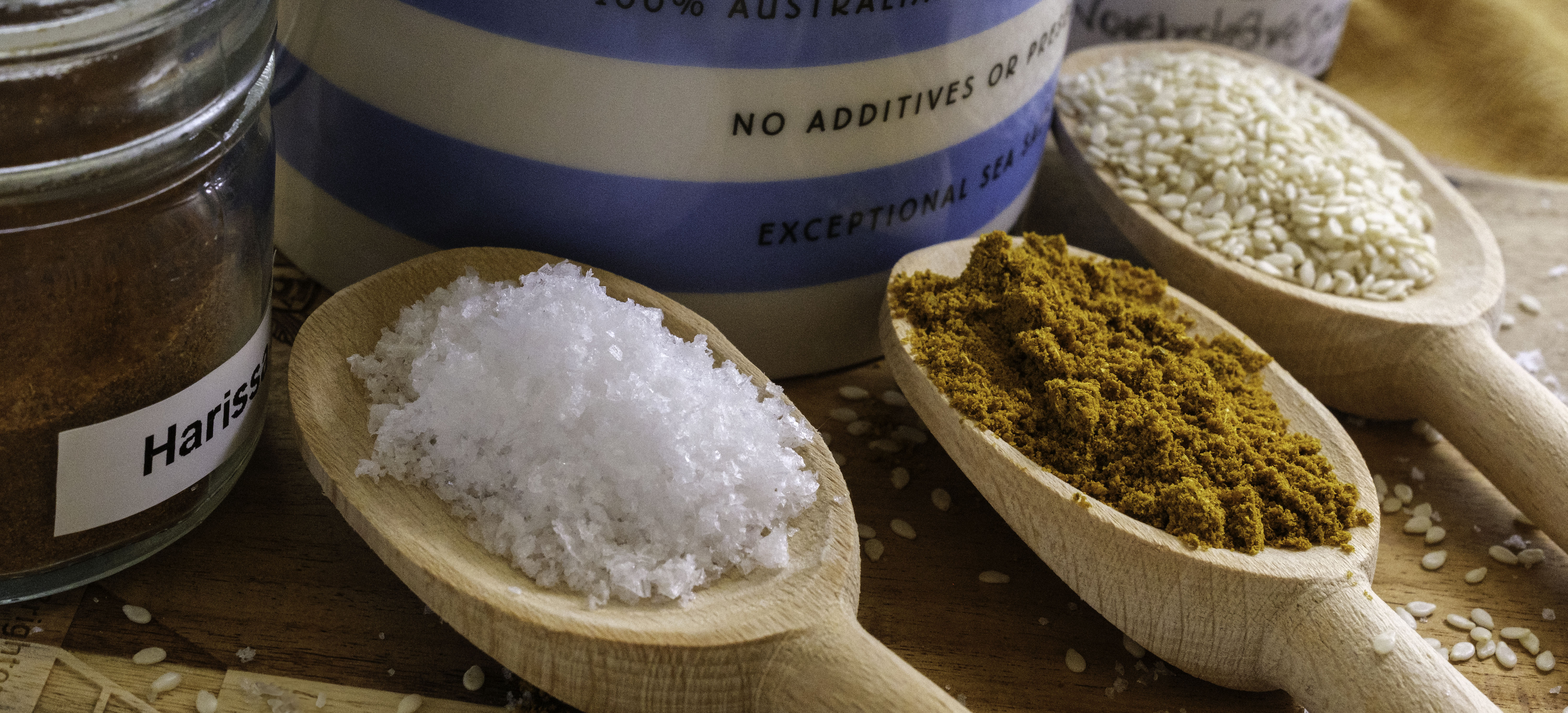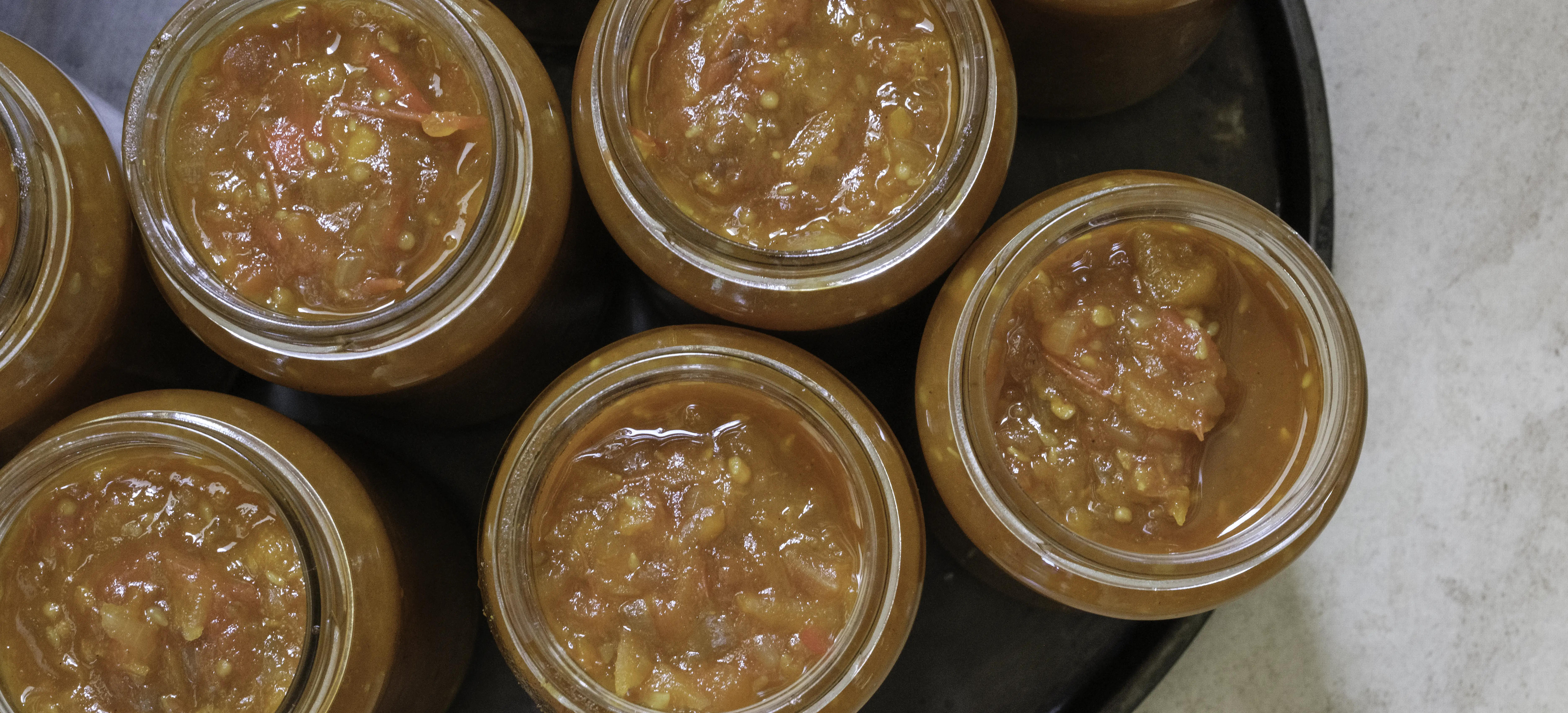Al's Taka Tala
- Pickles, Chutney, Relish & Sauces

Taka Tala, an African spiced fruit sauce created by a Zimbabwean farmer, has a unique blend of summer fruit and spices. Now presented as a chutney, its versatility has no limits. Use as a BBQ marinade, glazing smoked meat, to flavour up bakes, casseroles, toasted sango’s or any of your favourite dishes to elevate them to the next level.
Traditionally it’s made with dried apricots and sometimes peaches, but when apricots and tomatoes are abundant, our kitchen transforms them into this gob-smackingly good chutney. This is Al’s version – my gardening and cooking buddy of many years. Thanks for bringing this to fruition and making it one of our pantry staples.
- Preparation Time:
- 40 mintues
- Cooking Time:
- 1.25 hrs
- Quantity:
- 8 x 400 ml jars
PREPARATION
Sterilise glass jars and lids with a protective lining. Have the jars and lids dry, hot and ready for the bottling stage.

INGREDIENTS
- 2 kg
- Tomatoes, ripe
- 135g
- Salt
- 50 ml
- Vegetable oil
- 25g
- Yellow mustard seeds
- 20g
- Curry powder
- 10g
- Harissa powder
- 450g
- Brown onions, finely chopped
- 6
- Garlic gloves, medium
- 1
- Chilli, red
- 300g
- Carrots, peeled, grated
- 450g
- Apricots, finely chopped
- 600 ml
- Apple cider vinegar
- 400g
- Sugar, white
- 25g
- Sesame seeds
- 30 ml
- Worcestershire Sauce

METHOD
Wash and gently dry the tomatoes to remove any shop or garden dust and debris.
Removing the tomato skin will produce a more professional looking preserve that doesn’t contain tough pieces of skin throughout the chutney. It can be made without their removal. If this is your preferred method, proceed to Step 3.
To remove the tomato skins. Bring a large pot of water to the boil. While this is heating, insert a small sharp vegetable knife a short distance from the stem. Using as slight inward angle cut in a circular motion all the way around the stem. Repeat the process until the stem has been removed from all the tomatoes.
Place several tomatoes at a time in a pot of continuously boiling water for approximately 30 seconds. Remove and place in bowl of cold water. This will soften the skin for the next step. Be careful not overcook the tomatoes at this point. Remove and discard the skins.
Coarsely chop the tomatoes and place in a stainless-steel bowl. Cover with the salt and marinate for 2 hours. This will remove excess moisture, reduce the cooking time and produce a more intense flavour and luscious consistency. Drain thoroughly after 2 hours and put aside.
Over medium heat, fry the mustard seeds in the vegetable oil. Stir constantly as the seeds pop. Do not let them burn.
Add the curry powder, harissa and cook gently until they are aromatic. Remove from the heat and put aside.
In a preserving pan or heavy bottom stainless steel saucepan, fry the chopped onion and garlic in oil until translucent. Add the grated carrot and cook until it has softened.
Add the tomatoes, spice paste, chopped apricots, Worcestershire Sauce, chopped chilli, sugar and vinegar.
Place over medium heat and bring to the boil, stirring occasional until the sugar has dissolved. Simmer for approximately 80 minutes or until it has reached a thick chutney consistency.
Stir occasionally, particularly as the mixture thickens, to prevent the chutney from burning on the bottom of the pan
-
Use a funnel to pour into hot dry sterilised screw cap sealable bottles, fill to approximately 2.5cm (1 inch) from the top of the jar and seal with hot dry lids. This is the HHH method of sealing - hot preserve, hot jar with a hot lid.
Allow to cool and wipe the jars down to remove any spills during the bottling stage.
-
Label and store in a cool dark place in the kitchen or pantry.
Allow to mature for at least 4 weeks before eating.
Once opened, store in the fridge.
NOTES
- Good quality jars should be used in all preserving, particularly when they are processed in a hot water bath. Thin jars often cannot withstand the temperatures and may crack either in the bath or on and or after removal. Avoid the disappointment and invest in good jars from a homewares or preserves outlet. Select jars with non-reactive lids as the vinegar solution can cause the lids to rust over time.
- Choose clean ripe fruit. Do not use overripe and never use mouldy fruit as this will produce a poor-quality chutney.
- If you want a chunkier chutney texture, cut the fruit/vegetables into larger pieces. To ensure even cooking and consistency make sure they are all cut to the same size.
- Seal the chutney while its hot, in hot jars and with hot dry lids. This HHH method of HOT dry jars, HOT dry lids and HOT preserve creates a vacuum seal as it cools. The “popping” sound, often heard in the kitchen, signals a successfully vacuum sealed jar.
- The HHH method of sealing is preferred as there is reduced risk of contamination prior to and after sealing.
- Salt
- Use good quality pickling salt when making pickles and preserves. Many commercial salt brands contain stabilisers and anti-caking agents and often iodide which can form a whitish haze and sediment. These additives, particularly iodine, can affect the appearance and taste of pickles and preserves during the maturation and storage period.
- The ingestion of a cocktail of anti-caking chemicals such as calcium silicate, sodium silicoaluminate, tricalcium phosphate, magnesium carbonate, silicon dioxide and yellow prussate of soda, is also unnecessary. Read the label before buying and look for salt that is free from any artificial additives.
- My favourite salt is Olsson Cooking Salt. No commercial benefit is received from Olsson Salt.
- Cooking times are an approximation only. They are provided as a guideline as cooking times are influenced by the;
- size of preserving pan - the broader the pan the quicker the evaporation
- degree of fruit ripeness - the riper the fruit, the sweeter and juicer the initial chutney will be
- degree of heat when cooking - the higher the heat, the greater the boil which will produce greater evaporation.
- Types of sugar & vinegar
- The type and colour of the sugar and vinegar used will affect the final colour and flavour of the chutney. Malt vinegar and brown sugar will produce a dark brownish red chutney with a more earthy/molasses background flavour, while white wine vinegar or apple cider and white sugar will produce chutney that has a fresher and brighter flavour.
- Take care to only use vinegar which has a 5% minimum acetic acid content. The acetic acid content acts as the principal preservative, and a lower percentage will compromise the safety of your preserves. Commercially available vinegar is 5%, however most homemade vinegars do not achieve this level.
- Handling chillies
- It is important to wash your hands thoroughly after handling and de-seeding chillies. Chilli oil is easily transferred from the chillies to hands.
- If you touch your eyes or any delicate areas, the chilli oil will be transferred on contact and create a burning sensation. Why is chilli so hot? It’s all in the Scoville Heat Unit.
- Chutney consistency
- Spoon a little of the mixture on to a plate. The chutney should hold its shape and have a jammy consistency.
- Towards the end of the cooking process, it may be necessary to stir regularly. It is important that the fruit does not stick to the bottom of the pan and burn. Your chutney will be tainted with a burnt flavour will is not very pleasant.
- Knowing your spices
- Garlic (Allium sativum)
- Raw garlic has a sharp acrid taste, however when cooked it takes on a sweeter flavour and is not overpowering. It has the unique ability to heighten the flavour of the ingredients it’s combined with and is indispensable in the kitchen. Interestingly though, the way garlic is prepared will affect its flavour profile.
- There are two types of garlic- hardneck and softneck. Hardnecks grow with a stem that comes from the centre of the bulb and when harvested and cured, the stem becomes rigid and easily identifiable when pulling the cloves off. Softnecks have leaves rather than a central stalk, so this in no rigid stem in the middle of the bulb. Fresh garlic should be stored in loose netting or basket in a cool, dry, and well-ventilated place. Do not store it in a paper bag.
- Garlic’s flavour, pungency and moisture content will deteriorate over time. If you have an abundant garlic harvest try drying some and make a batch of garlic powder by blitzing it in a food processor or blender. Dried garlic and garlic powder is also available is supermarkets. They should be stored in a dry airtight container.
- Curry Powder
- Curry powder is a blend of sweet, pungent, hot and amalgamating spices. Using different combinations and proportions creates a variety of styles to suit different tastes. Amalgamating spices have the magical ability to harmonise the spice blend.
- The principal components of a Madras style curry powder include, cinnamon, allspice, nutmeg, cloves, cardamom, cumin, chili, pepper, fenugreek, fennel, coriander and turmeric.
- It’s believed the concept of a curry powder was initiated by the English colonists. On returning to England, they wanted to recreate the exotic flavours they enjoyed while serving in India.
- Curry powder should be stored in a dry airtight container away from extremes of heat, light and humidity. Under these conditions it should keep its flavour for 12 months.
- Mustard (Brassica alba – white/yellow), B. juncea (brown), B. nigra (black)
- Green mustard seeds are harvested when full-sized but before they are ripe, so they don’t split open. They are dried, and graded before being further processed for oil, powder or to remain as seeds. White mustard seeds are light brown rather than white and are often also called yellow or light brown mustard seed.
- They have a mild taste. The brown and black seeds are smaller, and the brown are hotter and often used in Indian cuisine. The black seeds are less common and have a distinctive aroma. Brown mustard seeds can be readily substituted for the black. Mustard has a pungent, earthy, and sharp flavour.
- Mustard powder is made by grinding and separating the husk from the centre of mustard seeds. Often turmeric and wheat flour is then added to the fine mustard powder from the seeds.
- Harissa
- Harissa is a traditional North African seasoning, available either as a paste or powder. It’s typically comprised of, chilli, garlic, sweet paprika, caraway, coriander, cumin, salt and either spearmint, parsley and/or oregano. It’s hot and has a lively complex flavour.
- Garlic (Allium sativum)

